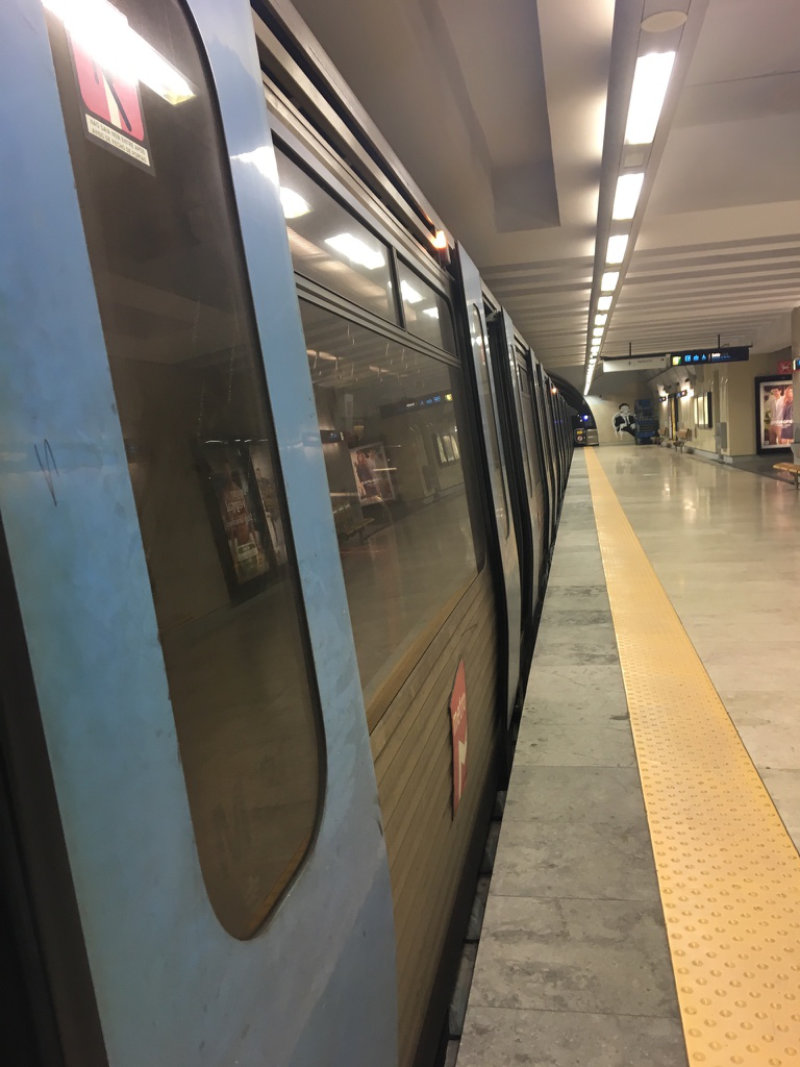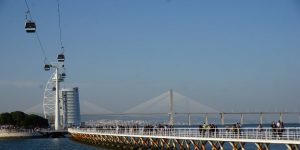Before we set off for Lisbon, we first gathered some information and then jumped head first into the preparations for the trip. From “how do we get there” to “where are we going to staying” all the way to “is it worth going there in March”.
Where is Lisbon and how is the climate there?
Lisbon is the capital of Portugal and is located on the Iberian Peninsula. Here, in the furthest south-western part of Europe, the river Tejo flows into the Atlantic. Lisbon is located about 13 kilometres away from the northern bank of the estuary.
The city is situated on 7 hills. The highest elevation in the urban area is 226 meters high. Around 2 million people live in the greater Lisbon area.
Due to the direct location on the Atlantic, the climate is very much influenced by the sea. The summers are not too hot and the winters are mild. It rarely ever gets cold enough for snow. In Lisbon, most of the rain falls mainly from October to March. The best time to travel is April / May and early autumn September / October.

How to get to Lisbon?
Our travel preparation for Lisbon began with the search for flights. We quickly realised that there are hardly any bargains. There are lots of cheap offers, but frankly, I did not have 12 hours and more to travel or the nerve to connect one or two times. It took some time and quite a few travel search engines until we found the ideal flight.
We finally decided to take a direct flight from Berlin-Tegel to Lisbon with TAP Portugal. Departure time was 6 in the morning – very early. (This must be one of the planes that always wake me up in the summer.). But that connection got us to Lisbon in a little over 3 hours. And we found a return flight quite late in the evening which would give us some more time in the city on our departure day.
We never flew TAP before. So we were a bit surprised that even in the cheapest class (only with hand luggage) we were offered something to eat and drink. We booked one additional piece of luggage, which cost us 20 € each way.
Lisbon Airport is located on the northern outskirts of the city. There is an airport bus (Aero Bus) into the city, which runs several times a day. Other options to get to the city are the red subway line, the bus lines 22 and 745 or a taxi.
Travel preparation for Lisbon – the search for a hotel
Each of our trips raises the question: hotel or apartment, what’s the better fit this time.
Finding an apartment on airbnb always takes me a while. Apart from the location of the apartment, I am very picky and always need slightly longer in the decision making process than others. And this time I did not feel like going through this.

So it became clear that this time we would be looking for a hotel. At first, I looked at some booking platforms. From a cheap and simple hostel with shared bathroom to a luxurious 5 star hotel, in Lisbon you will find everything in all price categories.
Not only is the location of the hotel crucial for us; since we work 1/3 of the day on each trip, we need free WiFi access. Also, there is nothing worse for me than having to look for a café first thing in the morning to have a proper breakfast. So breakfast in the hotel is a luxury that I am happy to pay a little extra for.
If you are looking for a hotel in Lisbon, you can find many good offers on hotel booking platforms. There is an offer for every budget and taste.
Booking.comPublic Transport in Lisbon
Public transport works very well in Lisbon. Subway, bus and tram can be used with a day ticket or with single tickets bought with the “Viva Viagem” metro card. This card can be purchased for 50 cents and is a rechargeable prepaid card. Travel costs are 1.45 € with the card.

In Lisbon, there are 4 metro lines, which are color-coded. The lines run from about 6:30 am until 1 am. The highlight for Lisbon travellers is the tram.
Old “eléctrios” drive up the hills of the city and sometimes through streets so narrow that you can almost touch the walls. In Lisbon, there are three cable cars and the elevator “Elevador Santa Justa”, which connect the suburbs with the residential districts of the Upper Town. Ferry connections are offered on the Tagus, the tickets are available at the piers.
So, well prepared and with a lot of ideas for excursions in our heads, we were ready to start our journey.































Leave a Reply